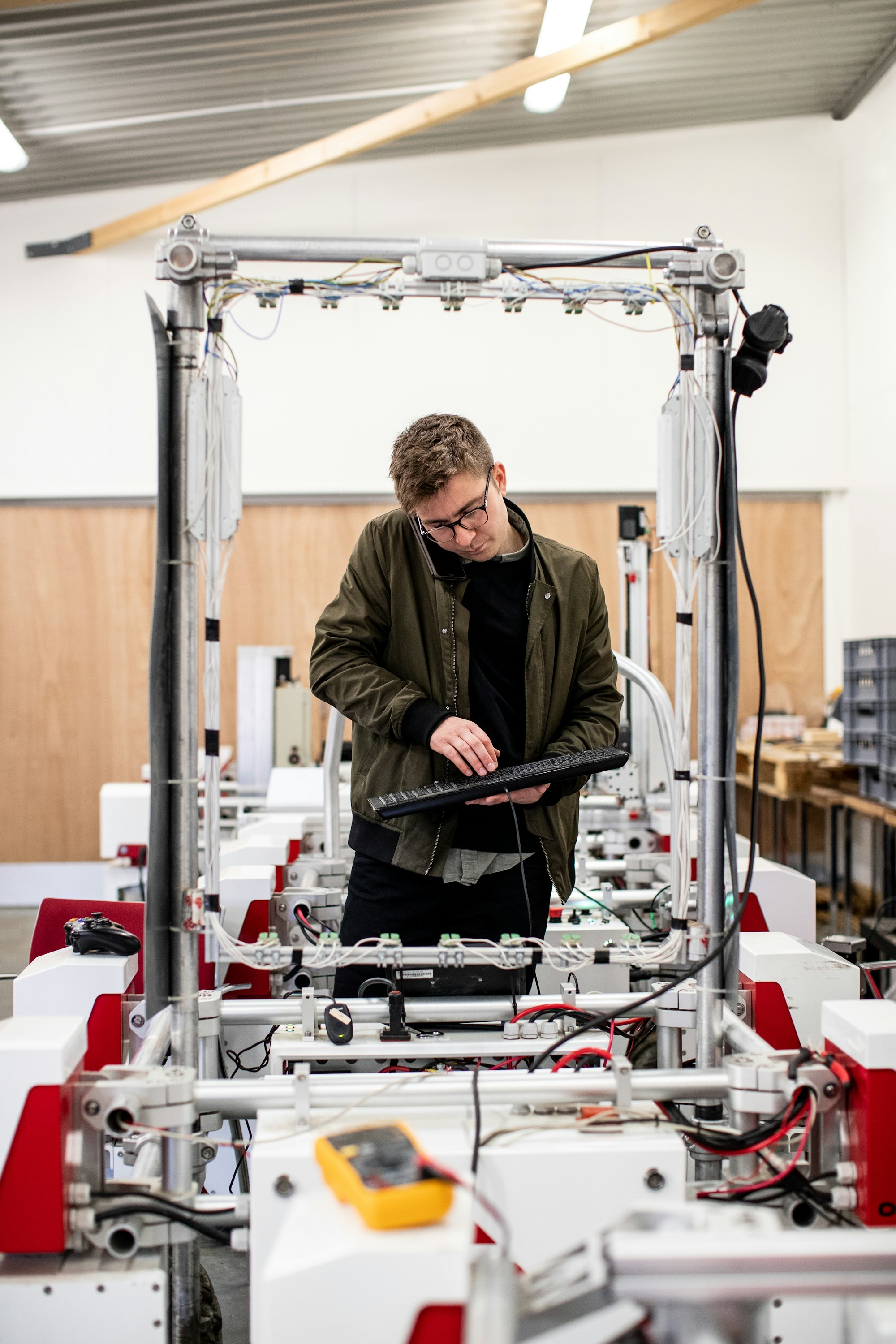Overcoming Machine Connectivity Challenges

In the era of Industry 4.0, industrial machine connectivity plays a pivotal role in optimizing operations, improving efficiency, and driving innovation, as described in the 5 benefits of OEE Monitoring for Manufacturers. However, the path to successful machine integration is riddled with challenges that can hinder progress. In previous articles we talked about the benefits of IIoT compared to traditional SCADA systems, this article delves into the hurdles faced in industrial machine connectivity, with a specific focus on data variety, volume, and speed. Furthermore, we will explore how IoTFlows SenseAi is revolutionizing the industry by overcoming these connectivity challenges.
The Trials of Data Variety
One of the primary challenges in industrial machine connectivity is dealing with the immense variety of data generated by diverse machines. Each machine may employ different protocols, formats, and standards, making data integration a complex task. This leads to interoperability issues and difficulties in harnessing the full potential of machine data for actionable insights.
The Burden of Data Volume
Industrial machines generate vast amounts of data, and managing this volume can strain existing network infrastructures. Traditional communication methods may struggle to handle the sheer volume of data produced in real-time, resulting in data loss, latency, and bottlenecks. Additionally, storing and processing such massive datasets become costly and time-consuming.
The Need for Data Speed
Real-time connectivity is critical for industrial processes, as delays or interruptions in data transmission can have significant consequences. Machines require seamless and instantaneous communication to ensure timely decision-making, predictive maintenance, and effective coordination across the production line. Achieving this level of speed is a considerable challenge in industrial machine connectivity.
Why Machine Integrations Fail
Several factors can contribute to the failure of machine integrations, including:
Lack of standardization: Industrial machines use different protocols and formats for data exchange, and this makes it challenging to integrate these machines seamlessly.
Poor data quality: Industrial machines generate a vast amount of data, but not all data is essential. Poor data quality can lead to poor insights, wrong predictions, and ultimately, poor decision-making.
Complexity: Industrial machines are complex, and integrating them can be challenging. A single machine can have hundreds of sensors generating thousands of data points, and managing all this data requires a sophisticated system.
Lack of expertise: Integrating industrial machines requires specialized skills and knowledge. Companies that lack in-house expertise may struggle to integrate machines successfully.
Overcoming Connectivity Challenges
Standardization and Interoperability: Adopting industry-wide standards and protocols can promote seamless data exchange between machines. Encouraging collaboration among manufacturers and technology providers to establish common frameworks enhances interoperability and simplifies integration efforts. Read more about these on Machine Communication Protocols: MTConnect, OPC-UA, Modbus
Robust Network Infrastructure: Investing in high-speed and reliable network infrastructure, such as 5G, can handle the growing demands of industrial machine connectivity. This technology offers lower latency, higher bandwidth, and greater capacity, enabling smooth data transfer and real-time decision-making.
Edge Computing and Distributed Architecture: Leveraging edge computing and distributed architectures allows data processing and analysis to be performed closer to the source. By minimizing data transfer to centralized servers, edge computing reduces latency and ensures faster response times, enabling real-time insights and action.
Advanced Analytics and Artificial Intelligence: Employing advanced analytics and AI algorithms can help make sense of the massive volume and variety of machine-generated data. These technologies enable predictive maintenance, anomaly detection, and optimization of industrial processes, leading to improved productivity and reduced downtime.
IoTFlows SenseAi: Finding the Right Solution
IoTFlows SenseAi has emerged as a game-changer in the realm of industrial machine connectivity. With its innovative approach, SenseAi addresses the challenges of data variety, volume, and speed:
Unified Integration: SenseAi offers a unified integration platform that seamlessly connects diverse industrial machines, regardless of protocols or formats. It simplifies the process of data integration by acquiring vibration and acoustics data from any machine and unifying it to provide production analytics for your entire fleet of machines, allowing for efficient utilization of machine-generated data.
Scalable Data Handling: SenseAi efficiently manages massive volumes of data by employing scalable infrastructure and distributed computing. It enables real-time data processing and analysis, empowering businesses with timely insights.
Real-time Analytics: SenseAi leverages advanced analytics and AI capabilities to deliver real-time insights and predictive maintenance alerts. By harnessing the power of machine learning, it enables proactive decision-making and optimization of industrial processes.
Edge Computing: SenseAi utilizes edge computing to reduce latency and enhance data speed. By performing data processing and analysis at the edge, it ensures rapid response times and enables real-time actions.
IoTFlows SenseAi also offers a modular approach to machine connectivity, allowing companies to start small and gradually scale up their machine integrations. The platform is easy to use, and companies do not require specialized expertise to use it. To learn more, check out What is IoTFlows?
In conclusion, industrial machine connectivity is critical for modern manufacturing processes, and companies must overcome the challenges of data variety, data volume, and data speed to achieve

